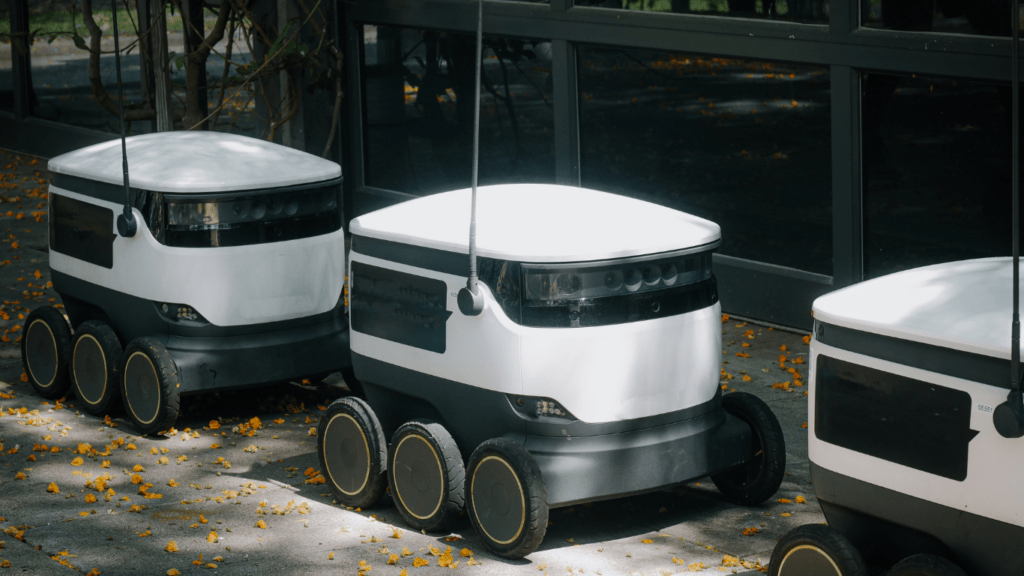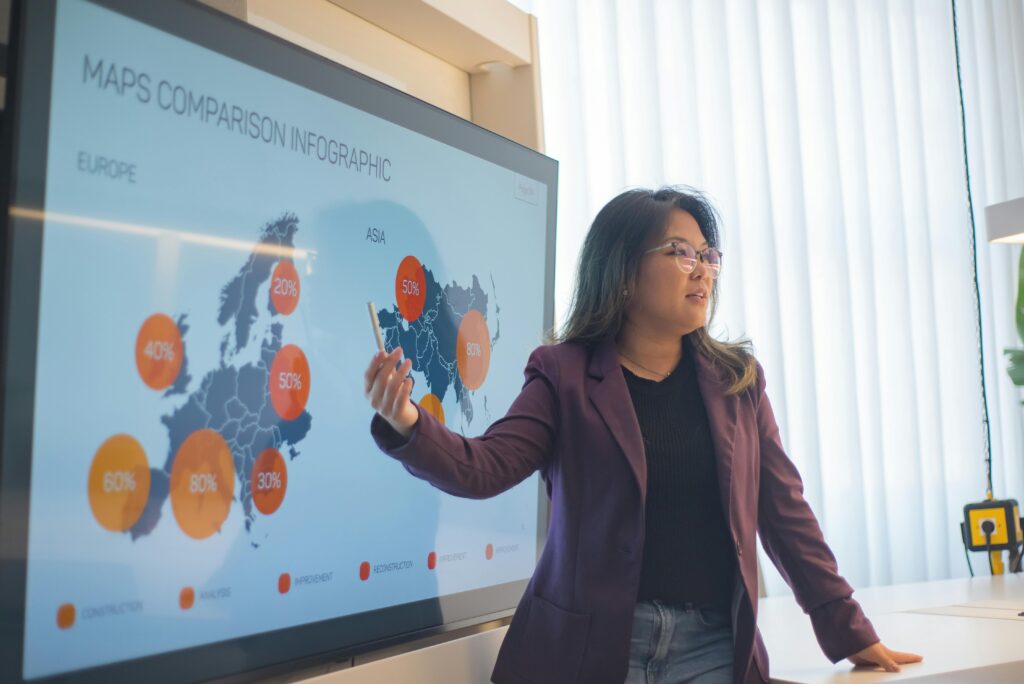The Impact of AI on Manufacturing
AI’s influence on manufacturing is immense, transforming traditional processes and driving efficiency.
Automation and Robotics
AI-powered automation and robotics enhance manufacturing by increasing precision. Factories incorporate AI-driven robots for tasks such as:
- assembly
- welding
- quality control
For example, robotic arms with AI vision systems can detect defects accurately, boosting production quality. This technology allows for 24/7 operation without fatigue, reducing downtime and labor costs.
Predictive Maintenance
Predictive maintenance utilizes AI algorithms to monitor machinery health and predict failures. By analyzing data from sensors, AI can identify patterns indicating potential issues.
For instance, AI systems can predict when a machine part will wear out based on vibration, temperature, and operational data. This proactive approach minimizes unexpected downtime, extends equipment lifespan, and reduces maintenance costs.
Advancing Healthcare Through AI
AI transforms healthcare by enhancing diagnostic accuracy and personalizing treatment plans. Here’s how it impacts various aspects of the medical field:
Improved Diagnostics
AI improves diagnostic capabilities through advanced algorithms and machine learning. Systems analyze massive datasets, identifying patterns that indicate diseases early.
For example, AI tools scan medical images such as X-rays and MRIs to detect anomalies like tumors. This reduces human error and speeds up diagnosis times.
In 2020, a study published in Nature found AI could diagnose breast cancer with greater accuracy than human radiologists.
Personalized Medicine
AI enables personalized medicine by tailoring treatments based on individual patient data. Machine learning models analyze genetic information, lifestyle, and other factors to recommend precise therapies.
For instance, AI predicts how patients respond to specific medications, allowing doctors to customize drug regimens.
The Journal of Translational Medicine reported that AI-driven personalized treatment plans improved outcomes for cancer patients by 25%. This approach minimizes adverse effects and maximizes treatment efficacy.
AI Transformations in Finance

AI reshapes the finance industry by introducing advanced technologies for trading, risk management, and fraud detection. These innovations streamline processes, enhance decision-making, and improve efficiency.
Algorithmic Trading
AI drives significant changes in algorithmic trading by leveraging complex algorithms and vast datasets to execute trades at optimal times.
For example, AI systems analyze market data in real-time, identify trading opportunities, and execute transactions with minimal human intervention.
This results in higher trading volumes and reduced latency. According to a report by Mordor Intelligence, AI algorithms account for roughly 70-80% of overall trade volume in the U.S. stock market.
Risk Management
AI enhances risk management processes through predictive analytics and machine learning models. Financial institutions use AI to evaluate credit risk, market risk, and operational risk.
For instance, banks deploy AI models to assess borrower creditworthiness by analyzing historical data, transaction patterns, and behavioral indicators.
These models enable more accurate risk predictions and better loan decision-making. The McKinsey Global Institute reports that AI could potentially save up to $1 trillion for global banking by reducing costs associated with risk and compliance.
AI’s Influence on the Transportation Sector
AI technology transforms the transportation sector through enhanced safety, efficiency, and cost-effectiveness.
Autonomous Vehicles
Autonomous vehicles utilize AI for navigation, obstacle detection, and decision-making. AI algorithms process sensor data from cameras, radar, and lidar systems to create real-time maps and identify objects.
This increases road safety significantly by reducing human error. Tesla’s AutoPilot and Waymo’s self-driving cars exemplify how AI adoption improves urban mobility and offers convenient, self-directed travel.
Logistics and Supply Chain Optimization
AI optimizes logistics and supply chains by analyzing data and predicting demand. Machine learning models forecast inventory needs, automate warehouse management, and enhance route planning for delivery trucks.
AI-driven tools such as predictive maintenance minimize equipment downtime by identifying potential failures.
Amazon’s use of AI for warehouse robots and route optimization is a prime example of streamlining operations to improve delivery times and reduce costs, benefiting businesses and consumers alike.
AI technology evolves rapidly, revolutionizing how industries like transportation operate and creating a more efficient, safer world.
The Role of AI in Entertainment and Media
AI is transforming the entertainment and media sectors by enhancing content personalization and visual effects. These innovations make media consumption more engaging and visually stunning.
Content Personalization
Content personalization leverages AI algorithms to recommend media content based on individual viewer preferences. Services like Netflix and Spotify use machine learning to analyze user behavior, such as watch histories and search patterns.
These platforms then curate personalized recommendations that enhance the viewer experience.
AI-driven content recommendation systems increase user engagement by delivering tailored content. Nielsen reports show that personalized recommendations can boost viewer retention rates by up to 60%.
By analyzing vast amounts of user data, AI enables media companies to understand their audience’s preferences better, thereby optimizing content delivery.
Enhanced Visual Effects
- AI revolutionizes visual effects in movies, TV shows, and video games.
- Studios use AI algorithms to automate processes that traditionally required extensive manual labor.
- Technologies like deep learning allow for realistic CGI, improving the quality and realism of visual effects.
- AI-powered software like DeepFake enhances facial animations, making them more realistic.
- Machine learning techniques enable faster rendering of complex scenes, reducing production time and costs.
- Adobe’s AI tools, for instance, can generate high-quality visuals while streamlining post-production workflows.




